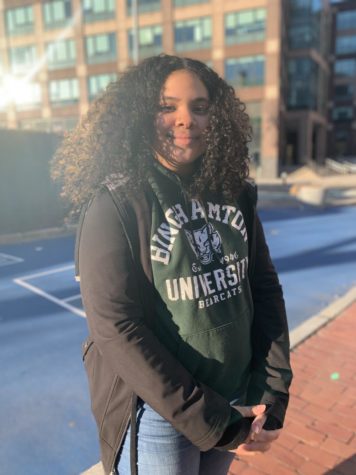Cultural appropriation? In my school? It’s more likely than you think
April 5, 2019
Gelled down hairs, gold hoops, long stiletto nails, cornrows, bantu knots, kimonos, hijabs are all examples of current “trends” that originate in appropriation of cultures.
Out of the 27 responses on a survey sent to the iSchool, 81.5% of students said that they knew what cultural appropriation is. One of the definitions given about cultural appropriation by junior Alma Reiss-Navarre was, “the act of taking select parts of a culture that you aren’t a part of and adopting them as your own, without recognizing the oppression and hardships that people who are really part of that culture face.”
When asked, “Do you think cultural appropriation is a problem at the iSchool,” 66.7% of people said No.
An anonymous iSchooler said, “there is generally a lack of cultural expression in the students for there to even be any appropriating of any culture–or any culture that anyone in the school can get offended by.”
Freshman, Chiaka Leilah, had an approach on this, saying that there is cultural appropriation in the school, but it comes in subtle ways that if someone wasn’t from that culture, they wouldn’t notice:
“Girls wear mom jeans that round their hips and outline their lips past the lip line to give an illusion of bigger lips; they bronze their skin and wear hoop earrings and put cornrows (they call them ‘boxer braids’) in their hair; guys wear basketball shoes popularized by black kids and use buzzwords like ‘bet’ and ‘yo’ and ‘wildin.’ They all listen to Hip Hop / Trap music and may whisper the n-word where they should be pressing their lips together.”
She added on that she thinks that the reason people do this is in order to “conform and be cool make people do these things.”
Junior Lucas Kulin said that it is not an issue at the iSchool because “cultural appropriation is not a real issue in modern society.”
He said, “I believe that cultural appropriation is not even an issue that we really need to looking at as a community. Cultural appropriation is an isolationist policy by trying to section off people’s cultures instead of sharing stories, sharing abilities, and making sure that everyone can get a proper educational experience in any format. People might say that cultures are being abused, I say that you’re just sharing the stories that we all tell each other, and to take that away because of what we identify as is a travesty.”
However, there is a fine line between appropriation and appreciation. Junior Alliyah Logan talked about this: “She [her friend] was Middle Eastern and she asked me if she could wear boxer braids and at first I told her ‘of course, you can.’ But, the reason why I said yes is because she actually asked and acknowledges and the fact that it’s not in her culture and it’s in my culture. So, by actually asking and educating yourself on the fact that other cultures do exist and other people have different perspectives is the most important part.”
When you do see cultural appropriation in the school, it is sometimes hard and tiring to call it out.
Logan said, “It’s so much work to always have your guard up in a sense and you always have to check someone, and sometimes you can’t do that because it’s not your culture. I have seen it, it’s just a shame.”
Outside of school, cultural appropriation is present yet subtle. But, there are things you can avoid doing in order to not be labeled as so.
In “The Dos and Don’ts of Cultural Appropriation,”it describes 7 ways where you are not culturally appropriating. One being the most obvious: not doing blackface. This is usually more present or a topic talked about more when Halloween comes along.
Something that is also present in today is using other people’s sacred artifacts as a trend or a costume. Under the subheading, “Don’t Adopt Sacred Artifacts as Accessories,” The Dos and Don’ts of Cultural Appropriation says:
“Adding insult to injury, a war bonnet like the one Kloss wore has spiritual and ceremonial significance, with only certain members of the tribe having earned the right to wear feathers through honor-worthy achievements and acts of bravery.”
In these cases, they use traditionally significant artifacts, which include eagle feathers, headdresses, or anything that takes away the values and principles of a culture, especially if it’s sacred, you should refrain from ever using it as a type of fashion or aesthetic.
Logan said that she sees this everywhere: “Different celebrities like Kim Kardashian wearing braids and then not acknowledging that braids are for African culture.”
The “our culture is not a costume” comes into conversation when cultural appropriation is brought up. There was the controversy with blackfishing, Kim Kardashian wearing “boxer braids,” Kylie and Kendall wearing a style that is often associated with “Chola” culture.
It’s everywhere in the media, whether it comes up in trending or not.
Some say that it is not an issue because globalization is inevitable, and so everyone partakes in other cultures without knowing. But there is a difference between having a shirt made from France, and wearing a kimono and saying your Japanese or mocking black women for having hoops, saying they look “ghetto,” but when hoops are put on a white women, it is “fashionable.”
Cultural appropriation is almost everywhere if we look in subtle ways. There’s a fine yet foggy line between appreciation and appropriation. One of the only ways we can fix this problem is communicating with other cultures that aren’t our own. Start having these conversation with other people so the ignorance doesn’t spread.
In the words of Logan, “When it comes to cultural appropriation, if you are not the one being impacted by it, it is obvious that you’re going to think that it’s not an issue. But you have to start understanding their perspective.”



